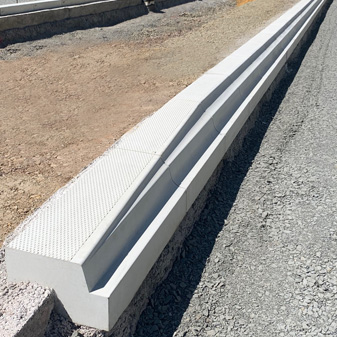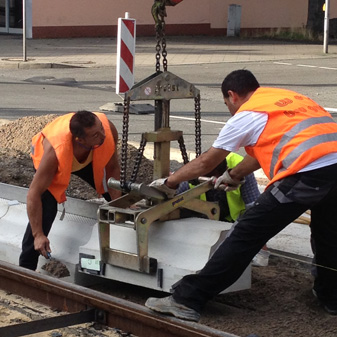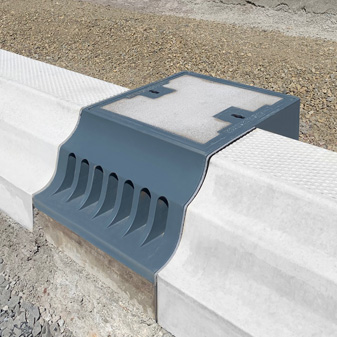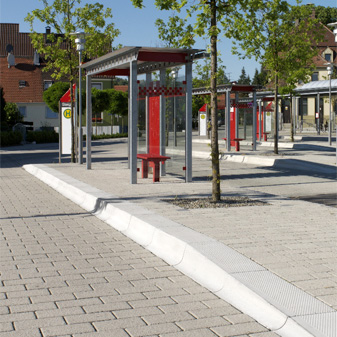Transport advice at a glance
Installation advice for KSB and KSBplus
Laid like DIN Kerbstones
1. DIN standard 18318 applies to the installation of kerbstones on public thoroughfares. This stipulates that kerbstones must be laid with a sufficient height and be correctly aligned on a foundation of C12/15 concrete at least 20 cm thick with back support. The concrete for the foundation and back support may not already be set when the kerbstones are laid in order to ensure good bonding between the kerbstone and the freshly poured concrete. The back support must be at least 15 cm high overall. The upper edge of the back support should be trued to the adjacent surfacing. We will send you a suitable installation recommendation if requested.
The kerbstones should be offset by 5 mm wide butt joints. As experience has shown that somewhat wider joints often result, we recommend that you begin offsetting at already existing anchor points. The joints may not be grouted with plaster. We recommend the joints be closed with elastic joint shims (can be obtained from PROFILBETON) or jointing with a suitable, elastic joint sealer (treatment and joint width as per manufacturer’s specifications).
2. All work is to be performed such that no damage is done to the kerbstones, in particular to the edges and the visible surfaces. Any coverings adjacent to the kerbstones should be laid such that they do not rest lower than the upper edge of the kerbstone once they have been compacted as this will otherwise lead to damage to the edges and surfaces. Ensure in particular that the Kassel Kerb® is not driven over by the compacting machine when compacting the covering as this will damage it.
3. The relevant accident prevention and occupational safety regulations must be observed.




Installation advice for the Kasseler Querungsbord®
1. DIN standard 18318 applies to the installation of kerbstones on public thoroughfares. This stipulates that kerbstones must be laid with a sufficient height and be correctly aligned on a foundation of C12/15 concrete at least 20 cm thick with back support. The concrete for the foundation and back support may not already be set when the kerbstones are laid in order to ensure good bonding between the kerbstone and the freshly poured concrete. The back support must be at least 15 cm high overall. The upper edge of the back support should be trued to the adjacent surfacing. A suitable installation recommendation can be found on the rear.
The kerbstones should be offset by butt joints at least 5 mm wide. As experience has shown that somewhat wider joints often result, we recommend that you begin offsetting at already existing anchor points. The joints may not be grouted with plaster. We recommend the joints be closed with a suitable elastic joint sealer (treatment and joint width as per manufacturer’s specifications).
2. All work is to be performed such that no damage is done to the kerbstones, in particular to the edges and the visible surfaces. Any coverings adjacent to the kerbstones should be laid such that they do not rest lower than the upper edge of the kerbstone once they have been compacted as this will otherwise lead to damage to the edges and surfaces. Ensure in particular that the Kassel Kerb® is not driven over by the compacting machine when compacting the covering as this will damage it.
3. The relevant accident prevention and occupational safety regulations must be observed.












